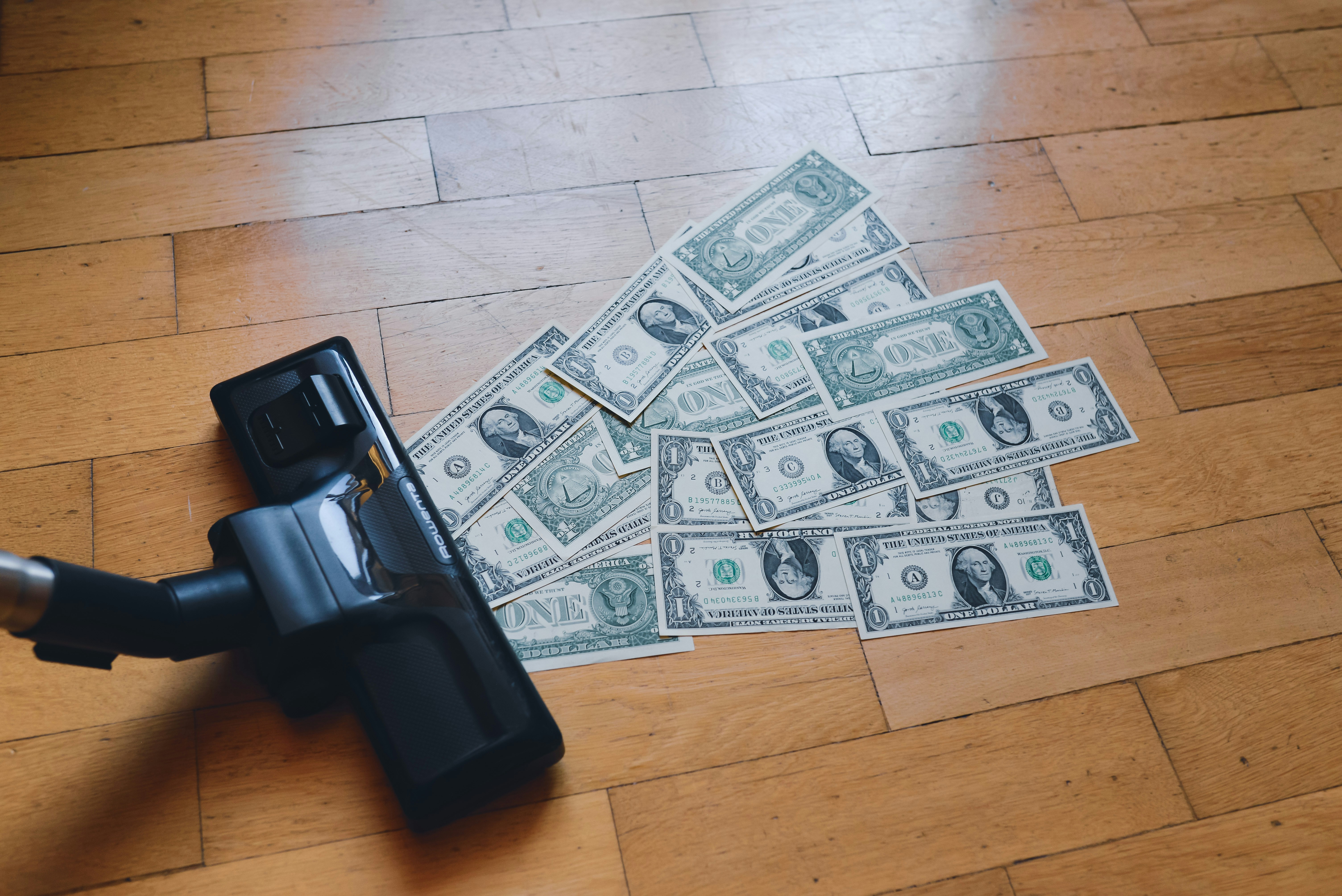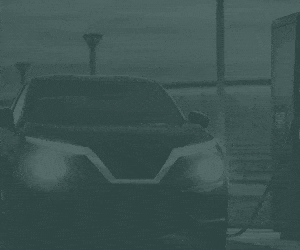Sovereign Metals: Dual-Commodity Play at China-Beating Cost

Sovereign Metals: World's largest rutile + 2nd-largest graphite resource. By-product model yields US$241/t graphite cost. Rio Tinto 19.9% stake. DFS Q4 2025.
- Sovereign Metals operates the world's largest known rutile resource alongside the second-largest flake graphite resource at its Kasiya Project in Malawi, positioning it as the only known deposit where graphite emerges as a by-product rather than the primary commodity.
- The company's weathered saprolite ore enables simpler processing without drilling, blasting, or crushing, yielding 96-98% carbon graphite concentrate at an incremental production cost of just US$241 per tonne, well below both Chinese producers and Western peers.
- Kasiya's flake size distribution delivers 57% large-to-jumbo flakes and 12% medium flakes commanding premium prices up to US$1,193 per tonne, with metallurgical testing confirming suitability across all major end-use markets including batteries, refractories, and expandables.
- Rio Tinto's 19.9% strategic investment and technical oversight through joint committees validates the project's commercial viability, with the Optimised Prefeasibility Study demonstrating a pre-tax NPV of US$2.3 billion at 27% IRR and 64% EBITDA margins.
- The Definitive Feasibility Study due Q4 2025 will refine capital estimates and provide the final framework for development financing, with steady-state production targeting 246,000 tonnes per annum of rutile and 265,000 tonnes per annum of graphite over a 25-year mine life.
Why Sovereign Metals Stands Apart in Critical Minerals
Sovereign Metals Limited (ASX:SVM; AIM:SVML; OTCQX:SVMLF) has released a new corporate presentation titled "Graphite By-Product Strategy Update" that underscores the company's unique position as the world's only project where graphite production represents an economic by-product of primary rutile mining. The presentation, published on 3 March 2025, arrives as both commodities gain recognition as critical materials for energy transition, advanced manufacturing, and strategic industrial applications. For investors seeking exposure to dual-commodity projects with demonstrated technical advantages and blue-chip strategic backing, Sovereign Metals presents a compelling case.
The Kasiya Project in Malawi contains 17.9 million tonnes of contained rutile within a 1.8-billion-tonne mineral resource, making it the world's largest known rutile deposit. Concurrently, the same mineralised system hosts 24.4 million tonnes of contained graphite, ranking as the second-largest known flake graphite resource globally. This dual-commodity endowment, combined with soft saprolite ore that eliminates conventional hard-rock mining costs, positions Kasiya to deliver both rutile and graphite at industry-leading margins. Rio Tinto's A$60 million strategic investment for a 19.9% stake, just below the Australian Corporations Act mandatory bid threshold of 20%, signals major-miner confidence in the project's technical and commercial viability.
Recent metallurgical test work confirms Kasiya graphite meets specifications across battery anode, refractory, and expandable markets, which collectively represent 94% of global natural graphite demand. The company's incremental graphite production cost of US$241 per tonne FOB Nacala port undercuts the weighted-average Chinese production cost of US$257 per tonne, positioning Sovereign to compete directly with low-cost Chinese supply without requiring downstream value-added processing. This cost advantage, combined with high-grade concentrate grades of 96-98% carbon and very low sulphur levels, differentiates Kasiya from hard-rock graphite peers that face higher processing intensity, lower-grade concentrates, and sulphur-related metallurgical challenges.
Company Overview: Strategic Location & Integrated Infrastructure
Sovereign Metals operates from offices in Perth, Australia, with operational headquarters in Malawi covering the Kasiya Project. The project occupies a 201-square-kilometre currently known mineralised area within a broader exploration licence. Kasiya's location provides access to rail transport via the Nacala Transport Corridor, a key logistics artery serving landlocked southern African mineral exports to the port of Nacala in Mozambique. The company's technical team worked alongside Rio Tinto subject-matter experts through a Sovereign-Rio Tinto Technical Committee to oversee the Optimised Prefeasibility Study, completed in January 2025, and is now advancing the Definitive Feasibility Study due in Q4 2025.
The Kasiya deposit sits within a blanket-style, flat-lying mineralised horizon hosted entirely in weathered saprolite. This totally weathered rock contains liberated rutile and graphite minerals within soft, friable material that can be excavated by load-and-haul methods alone. The absence of fresh rock, transitional ore, or significant sulphide minerals eliminates the need for drilling, blasting, crushing, and grinding, processes that account for substantial capital and operating costs at conventional hard-rock graphite operations. The company's pilot phase, conducted over six months on a 10-hectare site, successfully demonstrated mining, processing, deposition, and rehabilitation protocols, validating the assumptions underpinning the Optimised Prefeasibility Study.
Sovereign Metals' board and management combine mining industry experience with capital markets expertise. Managing Director and CEO Frank Eagar leads operational execution from South Africa and Malawi, while Chief Commercial Officer Sapan Ghai coordinates strategic initiatives from London. Chairman Ben Stoikovich has overseen the company's strategic positioning, including the Rio Tinto investment and technical collaboration frameworks. The Definitive Feasibility Study work streams encompass mine planning, metallurgical optimisation, infrastructure design, environmental and social impact assessments, and permitting schedules, with external engineering consultants contributing specialist expertise across process plant design, tailings management, and logistics optimisation.
Key Development: Graphite By-Product Economics Redefine Project Value
The 3 March 2025 presentation highlights Sovereign Metals' graphite by-product strategy, which treats graphite as an incremental revenue stream rather than requiring standalone economic justification. The Optimised Prefeasibility Study discloses an incremental graphite production cost of US$241 per tonne FOB port, calculated by deducting the portion of total production costs allocated to rutile. This methodology reflects the reality that mining, front-end processing, and rehabilitation costs would be incurred for rutile extraction regardless of graphite recovery. Consequently, the marginal cost of producing graphite concentrate involves only the incremental flotation circuit, graphite thickening, filtration, and transport to port.
This cost structure positions Kasiya below the weighted-average Chinese C1 cash cost of US$257 per tonne and well below Western graphite peers, whose C1 costs range from US$396 per tonne to over US$1,400 per tonne FOB according to company disclosures compiled in the presentation. The presentation's cost curve analysis, which includes Chinese production, demonstrates that Kasiya would rank among the lowest-cost producers globally even at current graphite prices. Benchmark Mineral Intelligence data cited in the presentation indicates that battery-grade graphite (minus 100 mesh, 94-95% carbon) traded between US$400 and US$575 per tonne FOB China in 2024, while large-to-jumbo flakes (plus 80 mesh) commanded prices from US$1,140 to US$1,193 per tonne.
Kasiya's flake size distribution of 57% large-to-jumbo, 12% medium, and 32% small contrasts sharply with hard-rock graphite projects, where small flakes often exceed 65% of production. Larger flakes attract premium pricing due to their suitability for refractory and expandable markets, which together account for 31% of global natural graphite demand. The presentation notes that weathered ore from Kasiya eliminates the intensive grinding required in hard-rock operations, preserving flake size and delivering higher-value product baskets. Metallurgical test work conducted by independent laboratories confirmed that Kasiya graphite meets or exceeds specifications for battery anode, refractory, and expandable applications, representing 94% of the 1.6-million-tonne global natural graphite market.
Strategic Significance: Competing with China Without Downstream Integration
The graphite industry faces a structural challenge where China produces approximately 1.2 million tonnes per annum, or roughly 75% of global supply, at a weighted-average C1 cost of US$257 per tonne. Western graphite projects typically report C1 costs ranging from US$400 to over US$700 per tonne, rendering them uncompetitive against Chinese supply unless they integrate downstream into purified spherical graphite or coated spherical graphite for battery anodes. This downstream integration requires significant additional capital, technical expertise in chemical processing, and access to electricity at competitive rates, capabilities more aligned with chemical companies than traditional miners.
Sovereign Metals' presentation emphasises that the company is "a mining company NOT a chemistry company" and has "no requirement to move downstream to battery anode production." The presentation lists 15 Western graphite companies pursuing downstream strategies, including battery anode facilities, to capture margin and achieve acceptable returns on investment. In contrast, Kasiya's incremental cost structure allows the company to generate returns by selling graphite concentrate FOB port, avoiding the execution risk, capital intensity, and operational complexity of downstream chemical processing. The presentation states that Kasiya will potentially compete with low-cost Chinese production even in today's market.
Metallurgical test work commissioned by Sovereign Metals demonstrates that Kasiya graphite concentrate can be processed into high-quality battery anode material comparable to products from leading battery anode producers. Test results disclosed in September 2024 showed that coated spherical graphite derived from Kasiya concentrate achieved first-cycle efficiency of 95.8%, initial capacity of 362 mAh/g, and particle size D50 of 17.5 microns, performance characteristics matching or exceeding leading industry products. However, Sovereign Metals does not plan to pursue anode production itself, instead positioning Kasiya graphite as a high-quality feedstock suitable for third-party processors serving battery manufacturers.
Current Activities: Definitive Feasibility Study & Strategic Milestones
Sovereign Metals completed a successful pilot phase over six months on a 10-hectare site, mining 170,000 cubic metres of saprolite ore and processing it through a demonstration plant. The pilot program validated mining methods, processing flowsheets, tailings deposition protocols, and progressive rehabilitation techniques, all conducted under oversight from the Sovereign-Rio Tinto Technical Committee. The Optimised Prefeasibility Study, informed by pilot-phase data, reports a pre-tax net present value of US$2.3 billion at 8% discount rate, internal rate of return of 27%, average annual EBITDA of US$409 million, EBITDA margin of 64%, capital expenditure to first production of US$665 million, steady-state rutile production averaging 246,000 tonnes per annum, and steady-state graphite production averaging 265,000 tonnes per annum over a 25-year mine life.
The Definitive Feasibility Study, scheduled for completion in Q4 2025, will refine these estimates through detailed engineering, optimised mine sequencing, updated capital cost estimates, and finalised operating cost models. The study will also incorporate updated environmental and social impact assessments, permitting pathways, and financing structures. Sovereign Metals has secured Malawian government support for the project, with the pilot phase completed within budget and on schedule. The company's Rio Tinto strategic investment, executed in 2023 at A$60 million for 19.9%, provides access to Rio Tinto's technical expertise across mine planning, processing, infrastructure, and project development while stopping just short of the 20% mandatory bid threshold under Australian law.
Sovereign Metals holds exploration licences covering the broader mineralised system at Kasiya, with the currently known mineralised area of 201 square kilometres representing a portion of the total licence area. The company's Mineral Resource Estimate of 1.8 billion tonnes at 1.0% rutile and 1.4% total graphitic carbon includes 1.2 billion tonnes in the Indicated category and 609 million tonnes in the Inferred category. The Probable Ore Reserve of 538 million tonnes at 1.03% rutile and 1.66% total graphitic carbon supports the 25-year mine life outlined in the Optimised Prefeasibility Study. Further drilling and resource expansion programs may extend mine life or support staged production increases, though current planning focuses on steady-state operations and the Definitive Feasibility Study.
Executive Perspective on Strategic Direction
In announcing the new corporate presentation, the company emphasised the strategic importance of its graphite by-product model in the context of global critical minerals supply chains. Managing Director and CEO Frank Eagar authorised the release, highlighting the technical validation achieved through the pilot phase and the collaborative framework established with Rio Tinto. The presentation provides investors with detailed visibility into Kasiya's competitive positioning, particularly the cost advantages derived from weathered ore processing and the premium value captured through superior flake size distribution.
Chairman Ben Stoikovich has also provided commentary on the company's progress, noting in a video presentation accompanying the release that the Optimised Prefeasibility Study results demonstrate Kasiya's potential to become a globally significant supplier of both rutile and graphite. The executive team's focus on maintaining Sovereign Metals as a mining company, rather than pursuing complex downstream chemical processing, reflects a strategic decision to concentrate on core competencies while positioning Kasiya graphite as a preferred feedstock for specialised processors and end-users. This approach reduces execution risk and capital requirements while enabling the company to compete effectively on the basis of product quality and delivered cost.
The company's relationship with Rio Tinto extends beyond equity investment to operational collaboration through the Technical Committee structure. This framework provides Sovereign Metals with access to Rio Tinto's extensive experience in large-scale mining operations, process plant design, environmental management, and project execution. The collaborative model supports knowledge transfer while preserving Sovereign Metals' operational independence and strategic flexibility. As the Definitive Feasibility Study progresses, this partnership is expected to continue providing technical validation and potentially facilitate future financing arrangements or offtake discussions with end-users seeking secure, cost-competitive graphite supply outside of China.
Investor Takeaway: Dual-Commodity Leverage with Downside Protection
The investment case for Sovereign Metals rests on three pillars: dual-commodity exposure providing optionality and revenue diversification, cost leadership in graphite enabling competitiveness against Chinese supply, and strategic validation from Rio Tinto reducing development risk. The company's graphite by-product model aligns with broader trends in critical minerals supply chains, where Western governments and industrial buyers seek non-Chinese sources for battery materials, titanium feedstocks, and advanced manufacturing inputs. Kasiya's combination of scale, cost structure, and product quality positions it to capture market share as demand for both rutile and graphite accelerates.
Rutile demand growth stems from titanium dioxide pigment consumption in paints, plastics, and paper, with long-term supply constraints driven by depletion of existing high-grade rutile deposits globally. Graphite demand growth reflects expansion in lithium-ion battery production, where natural graphite serves as the dominant anode material, alongside stable traditional markets in refractories, expandables, and lubricants. The Optimised Prefeasibility Study assumes long-term graphite basket pricing of US$1,290 per tonne and rutile pricing of US$1,490 per tonne for 95% TiO2 material, both conservative relative to recent spot prices and reflecting Kasiya's high-value flake size distribution and premium-grade rutile concentrate.
Sovereign Metals' market capitalisation and enterprise value remain modest relative to the project's disclosed NPV, reflecting typical discounts applied to pre-production miners and the execution risk associated with project financing, construction, and ramp-up. However, the Rio Tinto strategic investment, successful pilot phase, and imminent Definitive Feasibility Study reduce key de-risking milestones. Investors evaluating Sovereign Metals should consider the company's dual-commodity leverage, cost leadership positioning, strategic partnerships, and near-term catalysts as the Definitive Feasibility Study progresses toward Q4 2025 completion.
The Investment Thesis for Sovereign Metals
- Dual-commodity exposure provides revenue diversification across rutile and graphite markets, reducing reliance on single-commodity price cycles.
- Incremental graphite production cost of US$241 per tonne enables competitiveness against Chinese supply without requiring downstream integration.
- Rio Tinto's 19.9% strategic stake and technical oversight validate project economics and reduce development execution risk.
- Weathered saprolite ore eliminates drilling, blasting, and crushing costs, simplifying operations and lowering capital intensity relative to hard-rock peers.
- High-value flake size distribution with 57% large-to-jumbo and 12% medium flakes commands premium pricing in refractory and expandable markets.
- Definitive Feasibility Study due Q4 2025 represents the next major catalyst for project advancement and potential financing arrangements.
Sovereign Metals has positioned itself uniquely within the critical minerals sector by developing the world's only known deposit where graphite production represents an economic by-product of primary rutile mining. The company's Kasiya Project in Malawi combines the world's largest rutile resource with the second-largest flake graphite resource, hosted in soft saprolite ore that enables low-cost, low-complexity mining and processing. The Optimised Prefeasibility Study demonstrates robust economics with pre-tax NPV of US$2.3 billion, 27% IRR, and 64% EBITDA margins, supported by incremental graphite production costs of US$241 per tonne that undercut both Chinese and Western peers.
Rio Tinto's strategic investment and technical collaboration provide major-miner validation while the successful six-month pilot phase de-risks mining, processing, and rehabilitation protocols ahead of the Definitive Feasibility Study due Q4 2025. Metallurgical test work confirms Kasiya graphite meets specifications across battery, refractory, and expandable markets, representing 94% of global demand, while the high-value flake size distribution supports premium pricing. For investors seeking exposure to critical minerals with demonstrated technical advantages, strategic backing, and near-term development catalysts, Sovereign Metals offers a rare combination of dual-commodity leverage, cost leadership, and project-stage progression.
The company's focus on delivering high-quality graphite and rutile concentrates FOB port, without pursuing capital-intensive downstream integration, aligns with its core competency as a mining company and reduces execution risk relative to peers attempting complex chemical processing ventures. As Western supply chains seek non-Chinese sources for battery materials and titanium feedstocks, Kasiya's scale, cost structure, and product quality position it to capture meaningful market share upon project development. The Definitive Feasibility Study will provide the final framework for project financing, capital estimates, and construction schedules, marking the transition from technical validation to funding and execution phases.
TL;DR
Sovereign Metals operates the world's largest rutile and second-largest flake graphite resource at Kasiya in Malawi, with graphite as a by-product enabling incremental production costs of US$241/t, below Chinese averages. Rio Tinto's 19.9% stake and OPFS results show US$2.3B pre-tax NPV at 27% IRR with 64% EBITDA margins. Weathered ore eliminates hard-rock mining costs while delivering 96-98% carbon concentrate with 57% large-to-jumbo flakes suitable for all major markets. DFS due Q4 2025.
FAQs (AI-Generated)
Analyst's Notes




Subscribe to Our Channel
Stay Informed


















